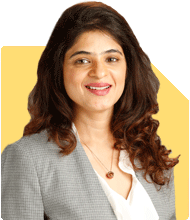Ramalingam Kalirajan |8459 Answers |Ask -Follow
Mutual Funds, Financial Planning Expert - Answered on Jun 05, 2024
He has an MBA in finance from the University of Madras and is a certified financial planner.
He is the director and chief financial planner at Holistic Investment, a Chennai-based firm that offers financial planning and wealth management advice.... more

Hi Sir, I am 33 years old.My monthly Income is 120000. I have 10 lakhs cash in bank, 1.5 lakhs PPF per year, 1 Lakhs Tata AIG insurance per year, 32000 LIC per year. Please help me to invest more for long term for my retirement.
Current Financial Situation
You have shared some critical information about your current financial status. Let's break it down for a clearer understanding:
Monthly Income: Rs 120,000
Cash in Bank: Rs 10,00,000
Annual PPF Contribution: Rs 1,50,000
Annual Insurance Premiums:
Tata AIG: Rs 1,00,000
LIC: Rs 32,000
This overview provides a solid foundation to build upon. We will now analyze and evaluate different components of your financial situation to optimize your investments.
Emergency Fund
Maintaining an emergency fund is crucial. This fund should cover 6 to 12 months of your monthly expenses. Given your monthly income, it’s wise to set aside at least Rs 7,20,000 to Rs 14,40,000. Since you have Rs 10,00,000 in the bank, you already have a substantial amount saved. Ensure this amount is in a highly liquid and safe investment vehicle, like a savings account or a liquid mutual fund, to cover any unforeseen expenses without disturbing your long-term investments.
Assessing Current Investments
Public Provident Fund (PPF)
Your annual contribution of Rs 1,50,000 to the PPF is a prudent choice. PPF offers tax-free returns and is a risk-free investment backed by the government. However, the returns, although guaranteed, might not be sufficient to meet your long-term retirement goals due to inflation.
Insurance Policies
You have two insurance policies:
Tata AIG: Rs 1,00,000 per year
LIC: Rs 32,000 per year
While insurance is essential for risk management, investment-cum-insurance policies often provide lower returns compared to pure investment options. It may be more beneficial to separate your insurance and investment needs.
Recommendation: Consider surrendering these policies and reallocating the funds into more lucrative investment options. Opt for a pure term insurance plan, which provides adequate coverage at a lower premium. This will ensure your family is protected while freeing up more funds for investment.
Investment Strategy
Long-Term Investment Goals
For a robust retirement corpus, it’s essential to invest in avenues that offer higher returns. Let’s discuss some suitable investment options and strategies.
Mutual Funds
Mutual funds are a great choice for long-term investments. They offer diversification and professional management, which can help in achieving higher returns.
Actively Managed Funds vs. Index Funds
While index funds are popular for their low costs, actively managed funds can provide better returns. Actively managed funds benefit from professional fund managers who can adapt to market changes and make strategic investment decisions. Although they have higher expense ratios, their potential for higher returns can justify the cost.
Regular Funds vs. Direct Funds
Investing through a Mutual Fund Distributor (MFD) with a Certified Financial Planner (CFP) credential can be advantageous. Regular funds offer the benefit of professional guidance, which is invaluable for optimizing your portfolio and navigating market complexities. Direct funds might have lower expense ratios, but they require more time and expertise to manage effectively.
Systematic Investment Plan (SIP)
Consider investing in mutual funds through a SIP. SIPs allow you to invest a fixed amount regularly, benefiting from rupee cost averaging and compounding over time.
Recommendation: Start a SIP in diversified equity mutual funds. Given your monthly income, you can allocate a substantial amount to SIPs. Aim to invest around 30-40% of your monthly income, i.e., Rs 36,000 to Rs 48,000, into equity mutual funds.
Retirement Corpus Calculation
Let’s calculate the amount you need to save for retirement. Assuming you wish to retire at 60 and considering inflation, let’s estimate the required retirement corpus.
Monthly Expenses: Let’s assume your current monthly expenses are Rs 60,000.
Inflation Rate: We assume an average inflation rate of 6% per annum.
Retirement Duration: Assuming you live up to 85 years, you will need funds for 25 years post-retirement.
Expected Returns: Assuming an average return of 12% per annum from your investments.
Using these assumptions, we can calculate the future value of your monthly expenses and the required retirement corpus.
Step-by-Step Calculation:
Future Monthly Expenses:
Future Monthly Expenses = Current Monthly Expenses × (1 + Inflation Rate)^(Retirement Age - Current Age)
Future Monthly Expenses = 60,000 × (1 + 0.06)^(60 - 33) = 60,000 × 4.29 ≈ Rs 2,57,400
Annual Expenses Post-Retirement:
Annual Expenses = Future Monthly Expenses × 12
Annual Expenses = 2,57,400 × 12 ≈ Rs 30,88,800
Retirement Corpus:
Retirement Corpus = Annual Expenses × (1 - (1 / (1 + Expected Returns)^Retirement Duration)) / Expected Returns
Retirement Corpus = 30,88,800 × (1 - (1 / (1 + 0.12)^25)) / 0.12 ≈ Rs 5,18,00,000
You will need approximately Rs 5.18 crores to maintain your lifestyle post-retirement.
Optimizing Investments
Diversified Portfolio
To achieve your retirement goals, it’s essential to have a diversified investment portfolio. This can mitigate risks and maximize returns. Here are some recommended asset classes:
Equity Mutual Funds
Investing in a mix of large-cap, mid-cap, and small-cap equity mutual funds can provide growth potential. Each category has its risk and return profile, and diversification can balance the overall risk.
Debt Mutual Funds
Debt mutual funds provide stability to your portfolio. They are less volatile than equity funds and can offer consistent returns. Investing in a mix of short-term and long-term debt funds can provide liquidity and stability.
Gold
Allocating a small percentage of your portfolio to gold can act as a hedge against inflation and currency fluctuations. You can invest in gold ETFs or sovereign gold bonds for ease of investment and better liquidity.
Review and Adjust
Regularly reviewing and adjusting your investment portfolio is crucial. Market conditions change, and so do your financial goals and risk tolerance. A Certified Financial Planner (CFP) can provide valuable insights and help you make informed decisions.
Tax Planning
Efficient tax planning can increase your investable surplus. Here are some tax-saving options:
Section 80C Investments
Your PPF contributions already qualify for Section 80C deductions. You can also invest in other 80C instruments like ELSS (Equity Linked Savings Scheme) mutual funds, which offer tax benefits and potential for higher returns.
Health Insurance
Investing in a health insurance policy can provide tax benefits under Section 80D. This not only saves taxes but also ensures you are financially protected against medical emergencies.
National Pension System (NPS)
NPS is a good option for retirement planning. It offers additional tax benefits under Section 80CCD(1B) and provides a mix of equity and debt investments.
Lifestyle Considerations
Balancing your current lifestyle and future financial goals is essential. While it’s important to save and invest for retirement, it’s equally important to enjoy the present. Allocate a portion of your income towards hobbies, travel, and other personal interests. This ensures a fulfilling life both now and in retirement.
Conclusion
Securing a comfortable retirement requires strategic planning and disciplined investing. Your current savings and investments provide a solid start, but optimizing and diversifying your portfolio can significantly enhance your retirement corpus.
Consider separating your insurance and investment needs by surrendering investment-cum-insurance policies. Invest in mutual funds through SIPs and maintain a diversified portfolio to balance risk and returns. Regularly review your investments and make necessary adjustments. Efficient tax planning can further boost your savings.
Remember, a Certified Financial Planner can provide personalized guidance and help you navigate the complexities of financial planning. I appreciate your proactive approach to securing your financial future. With careful planning and disciplined investing, you can achieve your retirement goals and enjoy a financially secure and fulfilling life.
Best Regards,
K. Ramalingam, MBA, CFP,
Chief Financial Planner,
www.holisticinvestment.in
You may like to see similar questions and answers below
Ramalingam Kalirajan |8459 Answers |Ask -Follow
Mutual Funds, Financial Planning Expert - Answered on Apr 04, 2024
Ramalingam Kalirajan |8459 Answers |Ask -Follow
Mutual Funds, Financial Planning Expert - Answered on May 20, 2024
Ramalingam Kalirajan |8459 Answers |Ask -Follow
Mutual Funds, Financial Planning Expert - Answered on Aug 12, 2024
Dr Nagarajan J S K |406 Answers |Ask -Follow
NEET, Medical, Pharmacy Careers - Answered on May 16, 2025

Based on my understanding, no one usually requests a birth certificate at this age. Your inquiry relates to the period before and after independence. In those days, they would accept the SSLC book if you didn't have a birth certificate. However, I am not sure if that was the case during your time.
Instead, you can present your Aadhaar card, which likely includes your original date of birth. You can utilize that information.
If my response doesn't fully address your concerns, I recommend consulting a Notary Public for further assistance.
BEST WISHES.
THANK YOU SIR.
with regards
Prof Suvasish Mukhopadhyay |651 Answers |Ask -Follow
Career Counsellor - Answered on May 16, 2025
Prof Suvasish Mukhopadhyay |651 Answers |Ask -Follow
Career Counsellor - Answered on May 16, 2025
Radheshyam Zanwar |1634 Answers |Ask -Follow
MHT-CET, IIT-JEE, NEET-UG Expert - Answered on May 16, 2025
Radheshyam Zanwar |1634 Answers |Ask -Follow
MHT-CET, IIT-JEE, NEET-UG Expert - Answered on May 16, 2025
Ashwini Dasgupta |107 Answers |Ask -Follow
Personality Development Expert, Career Coach - Answered on May 16, 2025
Ramalingam Kalirajan |8459 Answers |Ask -Follow
Mutual Funds, Financial Planning Expert - Answered on May 16, 2025
Ramalingam Kalirajan |8459 Answers |Ask -Follow
Mutual Funds, Financial Planning Expert - Answered on May 16, 2025
Milind Vadjikar |1236 Answers |Ask -Follow
Insurance, Stocks, MF, PF Expert - Answered on May 16, 2025
Milind Vadjikar |1236 Answers |Ask -Follow
Insurance, Stocks, MF, PF Expert - Answered on May 16, 2025

























